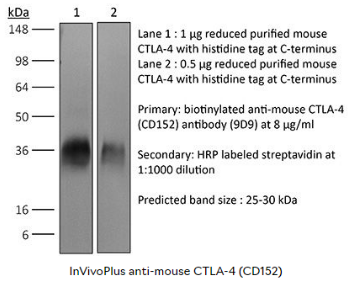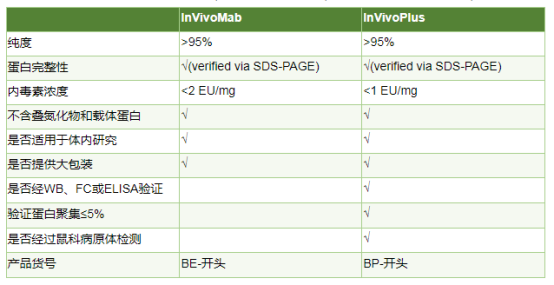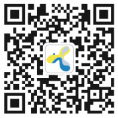BioXcell熱銷產(chǎn)品--InVivoPlus anti-mouse CTLA-4 (CD152)
產(chǎn)品描述:
BioXcell InVivoPlus anti-mouse CTLA-4 (CD152)克隆號9D9單克隆抗體能與小鼠CTLA-4(細胞毒性T淋巴細胞抗原-4)反應(yīng)���,CTLA-4也稱為CD152。CTLA-4是一種33 kDa的細胞表面受體����,由屬于免疫球蛋白超家族CD28家族的Ctla4基因編碼。CTLA-4在活化的T淋巴細胞和B淋巴細胞上表達�。CTLA-4在結(jié)構(gòu)上類似于T細胞共刺激蛋白CD28,兩種分子都與B7家族成員B7-1 (CD80)和B7-2 (CD86)結(jié)合�����。在與配體結(jié)合時���,CTLA-4負調(diào)節(jié)細胞介導(dǎo)的免疫反應(yīng)�����。CTLA-4在誘導(dǎo)和/或維持免疫耐受��、胸腺細胞發(fā)育和保護性免疫調(diào)節(jié)中起作用�。CTLA-4在免疫下調(diào)中的關(guān)鍵作用已經(jīng)在CTLA-4缺陷小鼠中得到證實,這些小鼠在3-5周齡時由于淋巴增生性疾病的發(fā)展而死亡。CTLA-4是通過免疫檢查點阻斷作為癌癥治療靶點的抑制性受體之一�。

產(chǎn)品詳情:
產(chǎn)品名稱 | InVivoPlus anti-mouse CTLA-4 (CD152) |
產(chǎn)品貨號 | BP0164 |
產(chǎn)品規(guī)格 | 5/25/50/100mg |
反應(yīng)種屬 | Mouse |
克隆號 | 9D9 |
同種型 | Mouse IgG2b |
實驗應(yīng)用 | in vivo?CTLA-4 neutralization
Western blot |
產(chǎn)品形式 | PBS, pH 7.0,Contains no stabilizers or preservatives |
純度 | >95%, Determined by SDS-PAGE |
聚合 | <5%, Determined by SEC |
無菌處理 | 0.2 μm filtration |
純化方式 | Protein A |
RRID | AB_10949609 |
分子量 | 150 kDa |
小鼠病原檢測 | Ectromelia/Mousepox Virus: Negative Hantavirus: Negative K Virus: Negative Lactate Dehydrogenase-Elevating Virus: Negative Lymphocytic Choriomeningitis virus: Negative Mouse Adenovirus: Negative Mouse Cytomegalovirus: Negative Mouse Hepatitis Virus: Negative Mouse Minute Virus: Negative Mouse Norovirus: Negative Mouse Parvovirus: Negative Mouse Rotavirus: Negative Mycoplasma Pulmonis: Negative Pneumonia Virus of Mice: Negative Polyoma Virus: Negative Reovirus Screen: Negative Sendai Virus: Negative Theiler’s Murine Encephalomyelitis: Negative |
保存條件 | 抗體原液保存在4°C,不能冷凍保存�����。 |
推薦同型對照 | InVivoPlus mouse IgG2b isotype control, unknown specificity(貨號BP0086) |
推薦抗體稀釋液 | InVivoPure pH 7.0 Dilution Buffer(貨號IP0070) |
?
為什么選擇InVivoPlus抗體��?
InVivoPlus級別的產(chǎn)品內(nèi)毒素含量更低�����,經(jīng)過多種實驗驗證�,更適合用于體內(nèi)實驗研究

該產(chǎn)品自上市已被多篇SCI文獻引用���,品質(zhì)有保證�����,以下是部分已發(fā)表的文獻引用:
應(yīng)用 | 文章 |
體內(nèi)CTLA-4中和 (in vivo CTLA-4 neutralization) | 1.?Dai, M., et al. (2015). 'Curing mice with large tumors by locally delivering combinations of immunomodulatory antibodies' Clin Cancer Res 21(5): 1127-1138. 2.?Zippelius, A., et al. (2015). 'Induced PD-L1 expression mediates acquired resistance to agonistic anti-CD40 treatment' Cancer Immunol Res 3(3): 236-244. 3.?Redmond, W. L., et al. (2014). 'Combined targeting of costimulatory (OX40) and coinhibitory (CTLA-4) pathways elicits potent effector T cells capable of driving robust antitumor immunity' Cancer Immunol Res 2(2): 142-153. 4.?Condamine, T., et al. (2014). 'ER stress regulates myeloid-derived suppressor cell fate through TRAIL-R-mediated apoptosis' J Clin Invest 124(6): 2626-2639. 5.?Muller, P., et al. (2014). 'Microtubule-depolymerizing agents used in antibody-drug conjugates induce antitumor immunity by stimulation of dendritic cells' Cancer Immunol Res 2(8): 741-755. 6.?Bulliard, Y., et al. (2013). 'Activating Fc gamma receptors contribute to the antitumor activities of immunoregulatory receptor-targeting antibodies' J Exp Med 210(9): 1685-1693. |
?
?

更多產(chǎn)品詳情請咨詢 BioXcell 中國授權(quán)代理——欣博盛生物
全國服務(wù)熱線: 4006-800-892 ? ? ??郵箱: market@neobioscience.com?
深圳: 0755-26755892 ? ? ? ??北京: 010-88594029 ???????????
廣州:020-87615159????????? ?上海: 021-34613729
代理品牌網(wǎng)站: www.yuebanme.com?
自主品牌網(wǎng)站: www.neobioscience.net